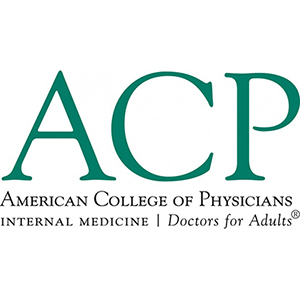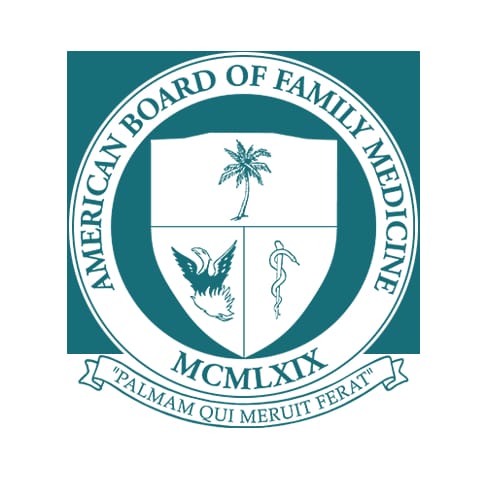
Services
The providers at the Touro Health Center provide a wide array of health care services including Primary Care, Osteopathic Manipulative Treatment, Geriatrics, and Rheumatology.
Primary Care
 Primary Care providers are the healthcare professionals that patients contact first for care and who see patients on a regular basis. A primary care provider gets to know patients and can provide medical diagnosis, treatment, mental assessment and management, preventative medical care and information, and personal medical care.
Primary Care providers are the healthcare professionals that patients contact first for care and who see patients on a regular basis. A primary care provider gets to know patients and can provide medical diagnosis, treatment, mental assessment and management, preventative medical care and information, and personal medical care.
Family medicine, also known as family practice, is the medical specialty in which physicians, family nurse practitioners, or physician assistants provide comprehensive, patient-centered primary health care to patients. Family medicine practitioners provide routine wellness care, such as physical exams or preventative care, to patients, regardless of age, gender, health, or social status. They are trained to know about many areas of medicine so that they are equipped to treat a wide variety of conditions.
A primary care provider who cares for a patient over a period of years provides better guidance about how to maintain a healthy lifestyle, especially since the provider knows the patient's medical history or has seen patterns of health problems. By adapting lifestyle changes and new health habits, patients may be able to avoid costly medications or procedures.
Osteopathic Manipulation Treatment
 Osteopathic manipulative treatment, or OMT, is hands-on care. It involves using the hands to diagnose, treat, and prevent illness or injury. Using OMT, your osteopathic physician will move your muscles and joints using techniques including stretching, gentle pressure, and resistance.
Osteopathic manipulative treatment, or OMT, is hands-on care. It involves using the hands to diagnose, treat, and prevent illness or injury. Using OMT, your osteopathic physician will move your muscles and joints using techniques including stretching, gentle pressure, and resistance.
OMT can help people of all ages and backgrounds. The treatment can be used to ease pain, promote healing, and increase overall mobility. OMT is often used to treat muscle pain. But it can also help patients with a number of other health problems such as:
- asthma
- sinus disorders
- carpal tunnel syndrome
- migraines
- menstrual pain
The principles of osteopathic care were established in 1874 by Dr. Andrew Taylor Still, who believed that effective medical care should promote the body's ability to heal itself. Using this principle, osteopathic care focuses on treating the patient as whole, rather than simply treating specific symptoms of an illness or condition. Doctors of Osteopathic Medicine (DOs) work in partnership with their patients to break down barriers that inhibit quality healthcare. DOs also stress the importance of preventative care.
Geriatrics
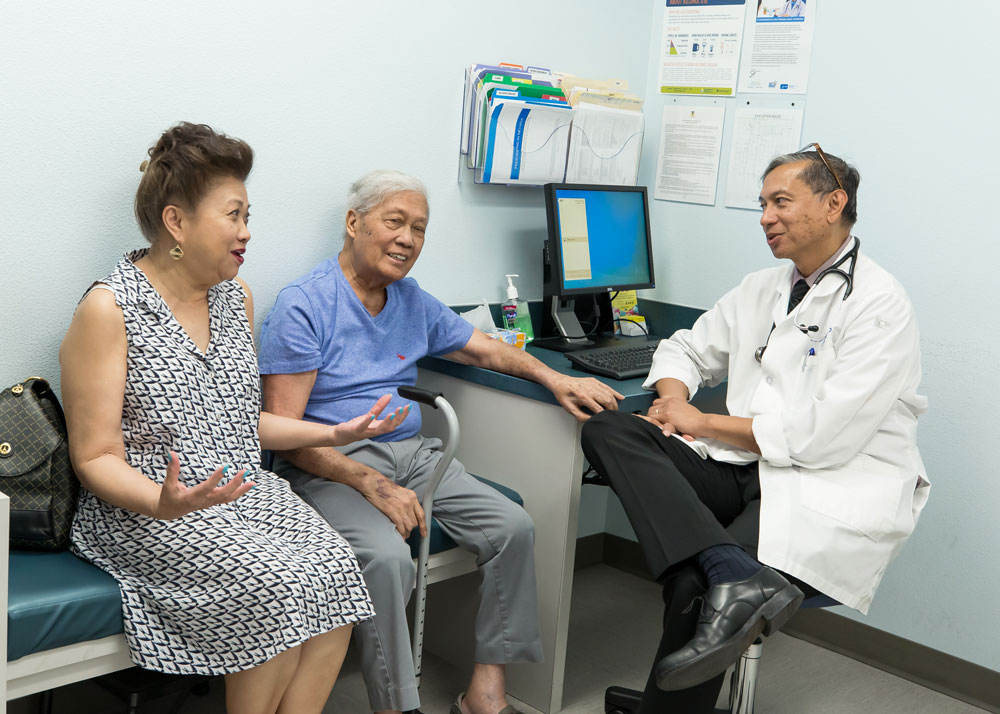 Geriatrics is the branch of medicine that focuses on the diseases, debilities, and care of aging adults. Our geriatric providers are devoted to improving the health, independence, and quality of life of older people.
Geriatrics is the branch of medicine that focuses on the diseases, debilities, and care of aging adults. Our geriatric providers are devoted to improving the health, independence, and quality of life of older people.
While primary care providers care for most people, geriatricians frequently provide the primary care for older adults who have the most complicated medical and social problems. Also, because of their unique qualifications and training, geriatricians are often sought to provide consultations for the frailest of older persons.
A geriatrician should be consulted when n older person’s condition causes considerable impairment and frailty. These patients tend to be coping with a several diseases and disabilities, including cognitive (mental) problems.
Rheumatology
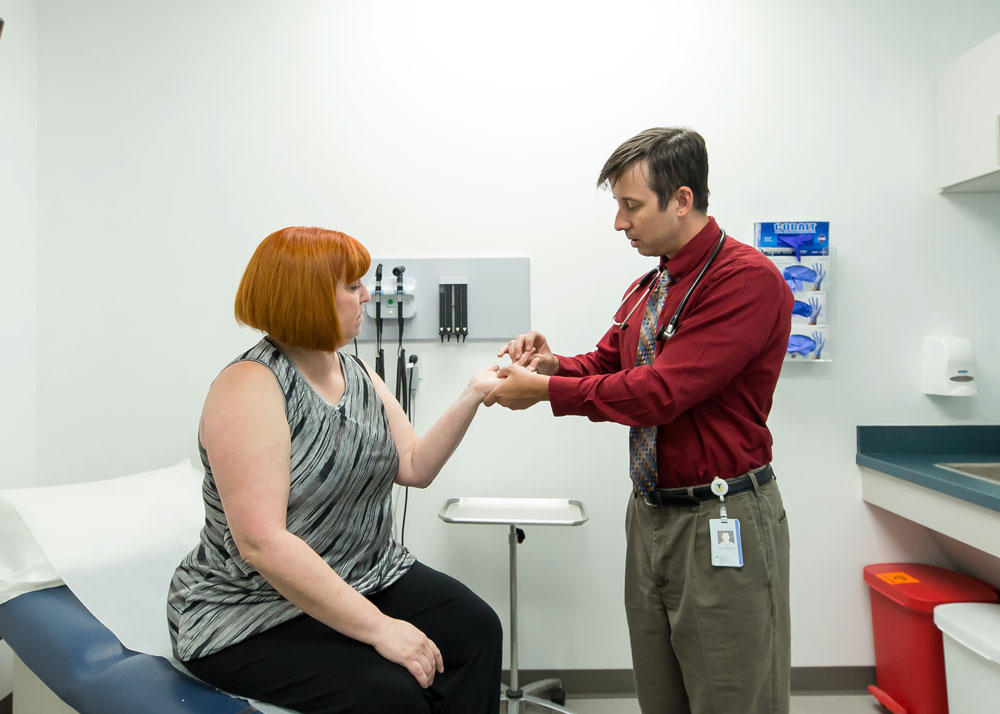 Rheumatology is a medical specialty that is focused on the diagnosis and treatment of arthritis and related rheumatic diseases.
Rheumatology is a medical specialty that is focused on the diagnosis and treatment of arthritis and related rheumatic diseases.
Rheumatologists are qualified by additional postgraduate training and experienced in the diagnosis and treatment of arthritis and other diseases of the joints, muscles, and bones.
Rheumatologists treat more than 200 different types of rheumatic diseases, some of which are very serious and difficult to diagnose and treat. Some can be chronic or life-threatening. Rheumatic disease may cause swelling, stiffness, or pain in the skin, muscles, tendons, and bones. Certain types of rheumatic diseases may also affect connective tissue and internal organs. Common types of rheumatic diseases may include:
- Osteoarthritis
- Lupus
- Rheumatoid Arthritis
- Fibromyalgia
- Systemic Lupus Erythematosus
- Scleroderma
- Spondyloarthropathies
- Gout
- Polymyalgia Rheumatica
- Polymyositis
- Bursitis
- Tendonitis
